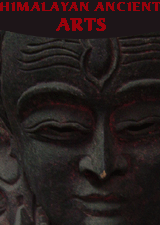Shop
By Type |
 |
|
|
|
|
|
|
|
|
|
|
|
|
|
|
|
|
|
|
|
|
|
|
|
|
|
|
|
|
|
|
|
|
|
|
|
|
|
|
|
|
|
|
|
|
|
|
|
|
|
|
|
|
|
|
|
|
|
|
|
|
 |
 |
Travel Packages  |
 |
 |
Newsletter |
 |
|
|
 |
|
 |
|
 |
|
 |
|
 |
|
 |
|
 |
|
 |
|
|
|
|
 |
Dramatic
Buddhist sculpture:by Joanna Shaw-Eagle, Washington
Times, January 19, 2008
Washington, USA -- "Buddhist Sculpture From Xiangtangshan,"
on view in the Freer Gallery of Art's Ancient Chinese Sculpture
Gallery, is a dramatic preview of early Chinese exhibits planned
for renovated gallery spaces in 2010 and 2011. Three of the
sculptures exhibited here are from Xiangtangshan's Cave 2,
with one Bodhisattva believed to have come from southern Xiangtangshan.
|

| <<
"Western Paradise" (above) is the earliest known
depiction of the Pure Land paradise in Chinese art during
the Northern Qi dynasty.
J. Keith Wilson, the distinguished
new curator of ancient Chinese art, was attracted to the Freer
because of its early Chinese art holdings, especially the
four previously mentioned Northern Qi (A.D. 550-577) limestone
sculptures. (The Xiangtangshan archaeological site lies about
15 miles south of present-day Beijing, and visitors can see
the best of the Northern Qi style there.)
Mr. Wilson, 51, has admired the style
for years.
"The sculptures are special"
he says. "In my opinion, they're among the most beautiful
of all Chinese Buddhist carvings " and I'm fortunate
the gallery owns 16."
There are "many more, about
1,100, ancient Chinese objects in storage," he notes,
adding that he plans to "show the best of them in the
six new galleries."
Buddhist sculpture arrived in China
about A.D. 100, traveling from India to China along the famed
Silk Road. The Northern Qi style developed from these earlier
models.
Like the Indians, the Chinese carved
sacred chapels into rock faces and decorated them with sculptures
and paintings in brilliant colors.
Caves similar to the smallish Cave
2 in Xiangtangshan originally may have held the exhibit's
tall "Standing Bodhisattva Holding a Lotus Bud,"
whose serenity and size quickly awe today's visitors, as they
did earlier worshippers.
|
Stylistically, the
tall, intensely spiritual Bodhisattva ("Enlightened Being")
recalls the more dramatic linearity, flatness and sharp edges
of the preceding Northern Wei dynasty (A.D. 320-550).
Here's where the fuller-bodied, fleshy
Indian Gupta style evolves into the columnar shapes and introspective
meditating of the Northern Qi style.
As in all Buddhist caves, floor-to-ceiling
stone friezes covered Cave 2's walls, and the exhibit's very
large, horizontally configured "Western Paradise"
and "Heavenly Gatherings of Buddhas and Bodhisattvas"
were among them.
"Western Paradise" (also
known as "The Buddha of Infinite Light") is a centered,
yoga-postured image sitting under an elaborate canopy. The
frieze's balanced design gives it a spirituality that "Heavenly
Gatherings" does not achieve.
Another work, the "Amitabha
Buddha," is the earliest known example of a different
version of the deity. Gentler and more forgiving than the
historic "Shakyamuni Buddha," he welcomes reborn
souls struggling up from the pond before him.
Scholars believe the Northern Qi
period "Amitabha Buddha" is the "Buddha in
the Land of Ultimate Bliss (Pure Land)," in which all
beings enjoy unbounded happiness.
"This [era] occurred about 1,000
years after the Shakyamuni's death," Mr. Wilson says.
"Fear of the first millennium,
and possibly the world's demise, made the Amitabha's Western
Paradise look mighty good in the sixth century," he says
with a chuckle.
Mr. Wilson's display of Xiangtangshan
sculptures gives visitors a welcome introduction to the future
exhibitions and whets their appetites for more.
|
| |
| |
| |
| |
| ............................................................................................................................................................................................................................ |
|
 |
| |
 |
| |
 |
| |
 |
|
 |
| |
|
|
| |
| |
|
|
 My
Shopping Basket My
Shopping Basket |
 |
| |
 Best
Seller Best
Seller |
 |
 |
 |
|
Grape Pashmina Shawl |
| Price: US$
71.43 |
|
|
|
| |
 Start
with your budget Start
with your budget |
 |
|
|
| |
 Tell
a friend Tell
a friend |
 |
Tell a friend and win exciting gifts...
Click here
to learn more. |
 |
 |
 |
 |
 |
 |
 |
| |
 |
|